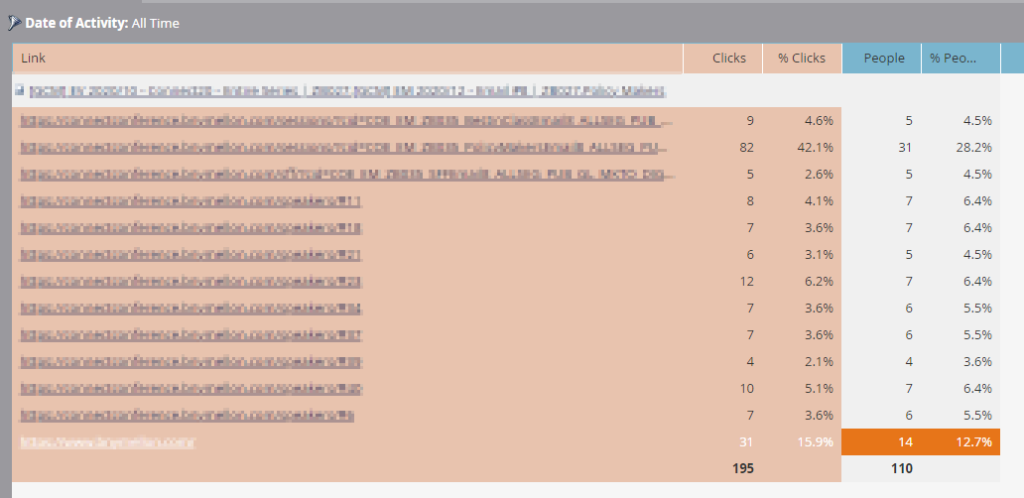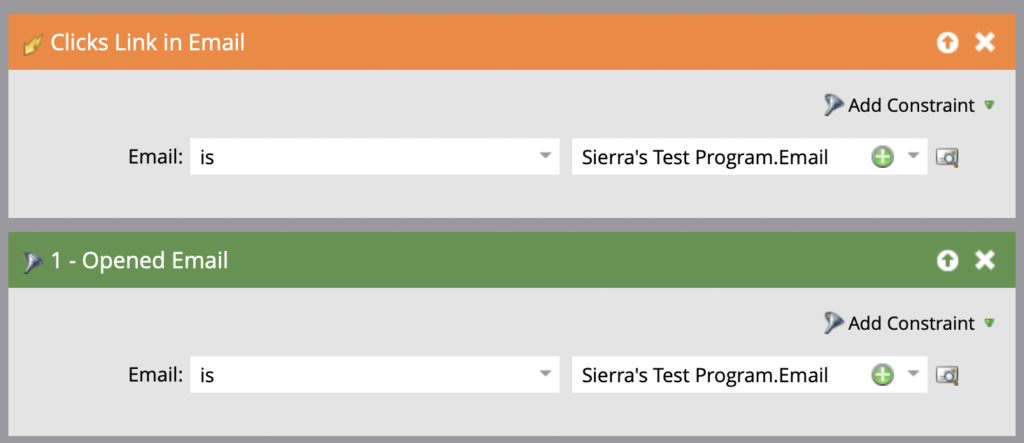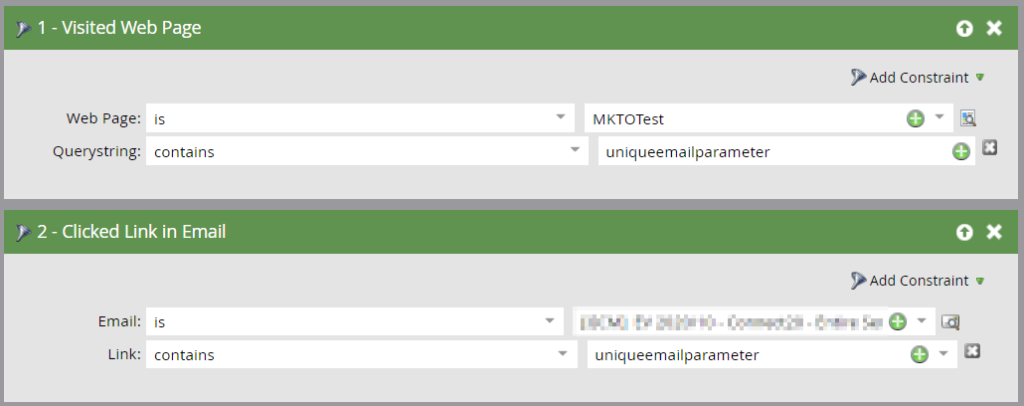How much do you know about Marketing Technology myths? Believe it or not, untested myths are a large part of MarTech “folklore” today and can greatly impact the decisions that are made and how you manage your instance.
What myths have you internalized as fact? Let’s put our knowledge to the bot click test.
What is a “bot” click?
A “bot” open or click refers to when an email security tool scans links in an email to check for spam and protect organizations against harmful phishing scams. They are most common in B2B marketing.
Unfortunately, ESPs cannot distinguish bot clicks from human engagement in emails, and the impact on marketing metrics can be drastic.

How to identify “bot” clicks:
- Email link performance report – look how many people are clicking on unimportant links in the email. Are there a suspicious number of clicks on these buried links at the bottom of emails? Probably bots. Notice 14 clicks in this email performance report on the Privacy Policy link in the footer… all the way at the bottom of the email.

- Similar to the example above, the very first link in your email (likely the preheader) is registering a vastly disproportionate amount of clicks.
- There is a surge of clicks within minutes of an email deployment, which you can see in the email performance report post-launch.
- In the lead record you see every or almost every link in the email clicked in a flurry of activity within the same minute:
Bot behavior:

Human behavior:

Yep, those are bot clicks.
- Certain email domains for specific organizations have a significantly higher click rate than all others. Remember, the email security bots are most likely implemented for an entire organization, so most email addresses associated with that company will follow the same pattern.
Now that you’ve identified bot clicks in your reporting, let’s go over some of the common myths about how to prevent this issue and what you can actually do to avoid inflated marketing metrics in reporting.
Note that this cannot be fully eliminated for out-of-the-box Marketo reports. You will still see bot clicks in these reports and there’s pretty much no way around it. However, if you use program statuses for your email programs to track engagement per best practice, your program membership reports will be closer to accurate because you can modify the “clicked” smart campaign with specific triggers and smart list criteria that weed out bot behavior.

Myth:
- You can use the “Opened Email” filter combined with the “Clicks Link in Email” trigger to isolate human behavior in your “Clicks” smart campaign to track engagement, or the “Opened Email” filter in your Email Performance Report.
- Why it doesn’t work: Frankly, opens are notoriously unreliable. Opens are tracked via a 1×1 pixel image that gets loaded when an email is opened. Unfortunately, certain email clients – especially outlook – will prevent images from loading, causing the open to go untracked and unregistered by Marketo. Additionally, if Marketo does record the open, it may not be registered in time for the clicks link trigger to fire and the “opened” filter to qualify the lead for the smart campaign.

Myth:
- You can put a hidden link unseen to the human eye in the email; if the link is clicked, engagement with the email should be discounted and considered as bot behavior.
- Why it doesn’t work: The idea makes sense; this link could very well be triggered by bot behavior and the engagement is not legit. However – the actual human recipient could engage with the email later on after the bot clicks the hidden link, and you will be discounting the actual human engagement as well. Additionally, by the time your “Clicks Link” trigger to update program status is triggered, the bot may not have clicked on the hidden link yet, making this whole solution a moot point.
Okay, now you’ve heard some common myths about how to identify and prevent bot clicks. So what can actually be done?
FACT:
- The only way to foolproof your emails against bot clicks is to rely on the “Visits Web Page” trigger or filter with the querystring constraint. In the constraint, you should reference a unique URL parameter that is appended to the links in your email and isn’t used anywhere else. Ideally, the URL parameter appended is unique to the exact email or email campaign you are building. Here’s an example of what it looks like:

The reason this trick works is that bots will not visit webpages after triggering link clicks in an email. You need the querystring constraint because the person you are marketing to could visit your landing page independent of clicking the link in your email – the querystring constraint is the variable that ties the two engagements (email and landing page) together to definitively say “this email influenced a click and visit to my landing page.”
Note there are a couple of prerequisites for this to function:
- You must be directing to a page that has your organization’s Marketo munchkin code
- Visits webpage trigger will not register if you’re directing to Youtube, a webpage behind a gated login to a portal. If you absolutely need to link to an external site, you could use a redirect from an empty Marketo landing page to the external landing page. The user will experience a brief lag between clicking the link in the email and being redirected, but you’ll be able to successfully track the landing page visit.
Do you have an issue with bot clicks but don’t have the time to run through all your existing emails and make this monumental change for a mature organization with a long-standing Marketo instance? If your hands are truly tied, one option is to audit your email reporting and look for irregularities and disproportionate clicks. Based on these observations, you can develop benchmarks for what “abnormal” behavior looks like: “We have determined this email is largely affected by bot clicks because the ratio of trivial link clicks to actual CTA clicks exceeds X%.” You can then apply that margin of error to your email marketing campaigns.
Have questions about implementing this solution at scale? Demand Spring can help – reach out today!
The post Bot Clicks: Myth or Fact? appeared first on Demand Spring.























